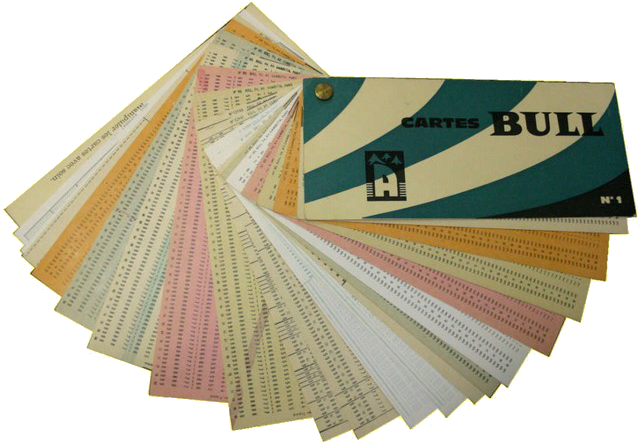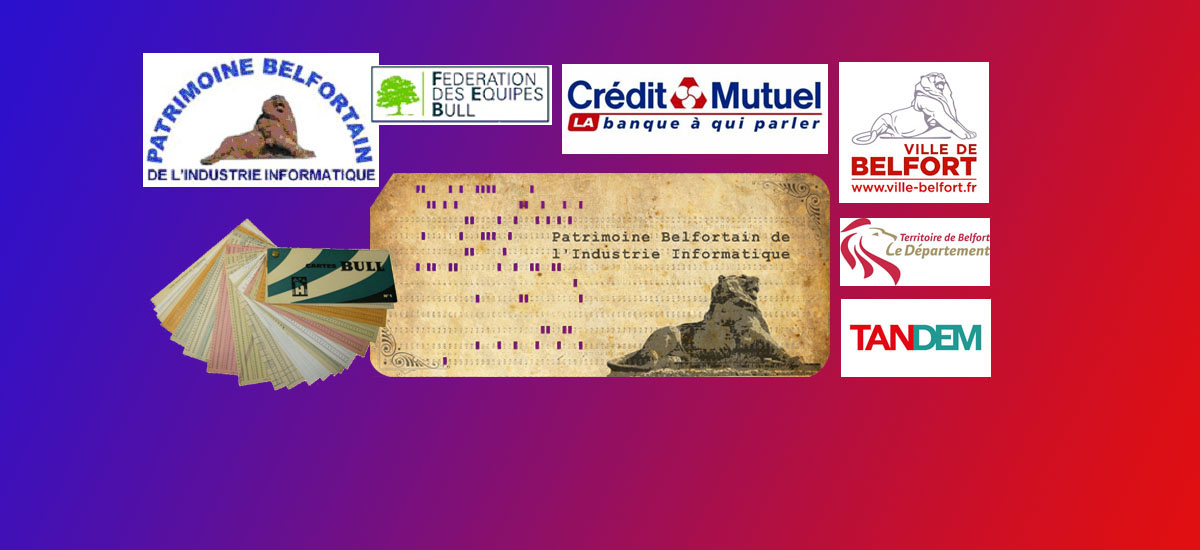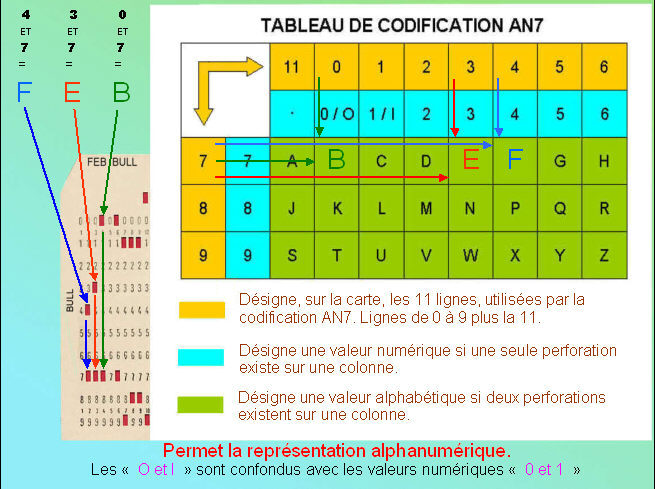THE PUNCHED CARD
The punched card is mainly used from 1890 to 1935 for statistical work, and then from 1935 for all management and administrative work. It has 12 lines of 80 columns. It is widely used by electromechanical machines and even computers until the late 1970s.
It will definitely be dethroned by the working mode called “transactional” which from a terminal, allowed a direct interaction between the computer and the user.

The data cards, made of cardboard of good quality, long 187.32 mm, 82.55 mm wide and 0.17 mm thick. These include a cut corner to the upper left corner, to identify the direction of flow in the machine. The cards come in many colors.
There are dozens of models of different pre-printed cards: simple cards without input boxes, or boxes with manual entry. (See a sample below).
It is the memory data storage. Characters are encoded by rectangular holes in the columns of the card, as we have seen, has 80. It was necessary to find a code interpretable by such material for storing data on the card. To this end, Bull has used the code AN7.
Alphanumeric characters used in this Code are:
numeric characters: 0 1 2 3 4 5 6 7 8 9 and (.) point
alphabetic characters: A B C D E F G H J K L M N P Q R S T U V W X Y Z
Note that the O and I are not in alphabetic characters, but characters are identical to 0 and 1.
AN7 code, is defined as:
- Numeric characters are encoded on a column, by a perforation at the location corresponding to its value (0 to 9 and 11 to the point).
- Alphabetic characters are encoded on a column, by two holes.

